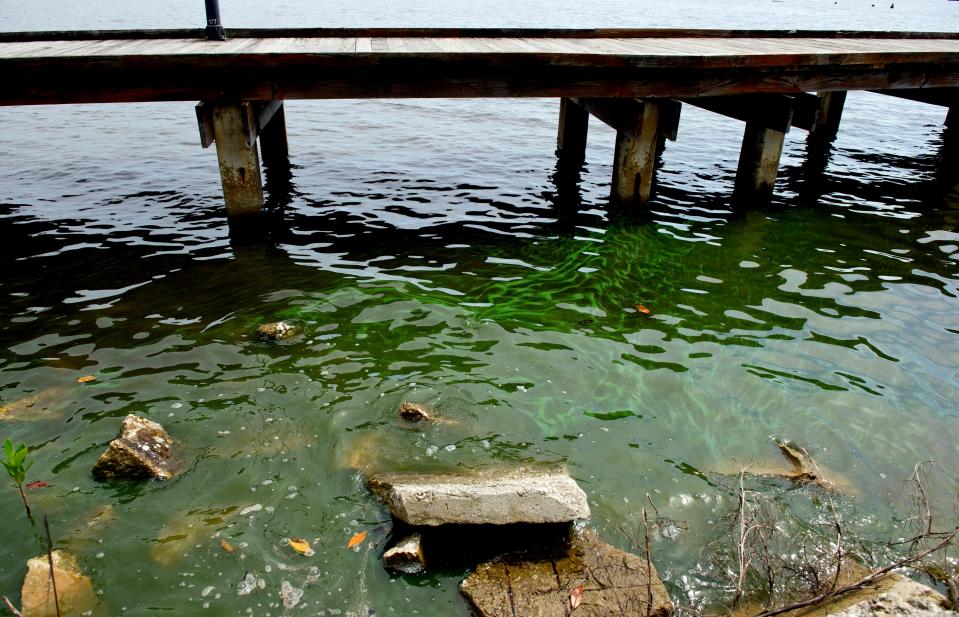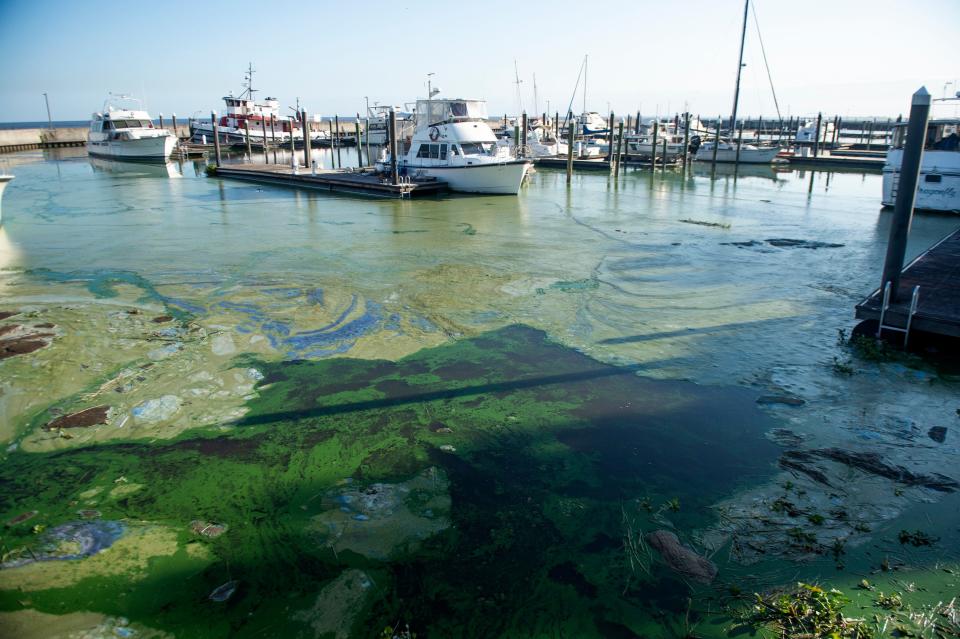The return of toxic algae blooms exposes Florida’s failure. The federal EPA must act.
In what has become a disturbing annual rite of spring here in Florida, blue-green algae blooms have already cropped up in rivers and lakes across the state.
Many of the blooms contain cyanotoxins linked to a wide array of human health problems, including liver and neurological disease. They can also harm, and even kill, wildlife and pets. Exposure can occur through incidental ingestion, skin contact and inhalation of aerosolized bacteria during activities like swimming, wading and surfing.
Blooms with cyanotoxins exceeding federal safety guidelines have already been reported, not only on Lake Okeechobee, but in the Caloosahatchee and St. Lucie estuaries. A health alert was also issued in Lake County, which, with 250 named lakes, touts itself as “Florida’s lakeside escape.”
Until recent years, the blooms were largely a summer and fall problem.
Not anymore.
Thanks to warming waters, unchecked pollution and years of inaction from state regulators, algae blooms have become a growing health threat and a stain on Florida’s reputation as a subtropical wonderland.
That’s why the Center for Biological Diversity, where I work, along with four other conservation groups and the City of Stuart recently petitioned the federal Environmental Protection Agency to set standards for these cyanotoxins. The need is urgent.
'New normal' includes more frequent algae blooms

Cyanobacterial toxicity in a water body can essentially be invisible. It can occur before an algae bloom appears or when it seems to be gone. The current practice, where the state issues an advisory after an agency or citizen reports a visible bloom, fails to account for this.
Quantitative standards would not only help better inform public health advisories, but also maintain and restore water quality. Standards would help the state identify the most vulnerable waters before they become impaired and spotlight regions where more management is needed to control the pollution sources feeding the blooms.
Florida’s new “normal” spring season now routinely includes multiple toxic blooms, including on Lake Okeechobee — the “liquid heart” of the Everglades. Last year’s dangerous cyanobacteria bloom, sprawling across about 380 square miles of the lake, was easily visible from outer space.
The troubling absence of any standards to better protect people and wildlife is why, back in May 2019, the center petitioned the state to establish water-quality criteria for these toxins. That same year, Florida’s Blue Green Algae Task Force also recommended that “defensible water quality criteria” should be established by the Florida Department of Environmental Protection.
Recognizing the need for states to better monitor and prevent toxic algae outbreaks, in 2016 and again in 2019, the EPA published recommended safe levels for states to use in setting standards for cyanotoxins.
Although states are not required to adopt the EPA recommendations, they must, at minimum, provide explanations for not adopting the criteria as part of their mandatory triennial reviews of water-quality standards.
But Florida regulators have failed to even complete the overdue review, let alone begin the work of setting standards.
Standards can help regulators manage problems

State regulators know what’s fueling the increased algae blooms. In the case of the Caloosahatchee and St. Lucie estuaries, that pollution — high in nutrients like phosphorus and nitrogen — comes mainly from agricultural, municipal and industrial runoff north of Lake Okeechobee.
In addition to fertilizers and animal waste from farm fields, leaking septic tanks and overflows from wastewater systems are culprits.
The reality is that without standards to hold Florida accountable for doing a better job of managing those issues, no one will ever be held responsible for the pollution that’s triggering the blooms.
So the dangerous algae blooms will continue to spread across state waters, threatening the health of people and wildlife, and further damaging Florida’s recreational economy.
Jason Totoiu is a Florida-based senior attorney at the Center for Biological Diversity where his work focuses on water quality and ecosystem protection and restoration.
This article originally appeared on Treasure Coast Newspapers: State should use federal water-quality standards to protect citizens

